
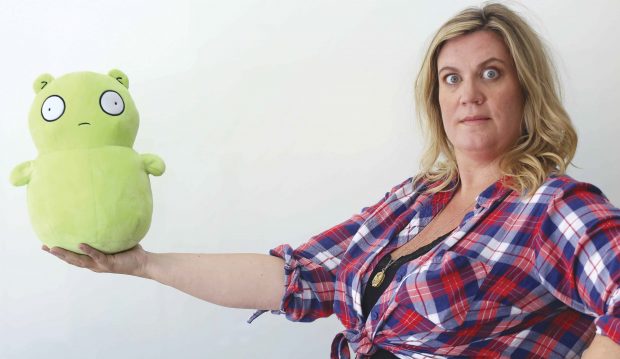
Wendy Molyneux holds a stuffed version of the mysterious Kuchi Kopi character from Bob’s Burgers.
TV FANS MIGHT get their notions of a comedy writer’s workplace from the sitcom 30 Rock, with its gaggle of unkempt guys tossing around food and sexist jokes. But reality is the polar opposite at the gleaming new offices of Fox’s long-running animated series Bob’s Burgers, where Wendy Molyneux ’97 works as a writer and an executive producer.
Molyneux’s private office is colorful and comfortable, but also tidy and sunny. Artwork by fans, depicting the show’s goofy but lovable characters, adorns the walls, attractively framed and carefully aligned. Beyond her door, the common areas provide roomy and serene spaces where colleagues can convene for group writing sessions or have a bite at a working lunch counter, a replica of the one on the show.
The offices reflect a designer’s orderly touch, not the unruly, chaotically creative mind of a comedy writer.
Tidiness, Molyneux will admit, is not her strong suit. She once hired a professional organizer to help get her life in order, as she explained to podcast host and fellow Pomona alumna Alison Rosen ’97. During that assisted cleanup, Molyneux rummaged through boxes of her old college stuff and got a glimpse of herself more than 20 years ago as an aspiring scribe. She didn’t like what she saw.
“I looked at some of the things I had written and thought, ‘Oh God, how did I have a single friend?’” Molyneux said on the episode of Alison Rosen Is Your New Best Friend. “Some people are better than I was at that age, but I think I was really pretentious.”
If so, Molyneux, now 43 and expecting her fourth child in just a few weeks, certainly seems to have grown out of it. Dressed casually with hair uncoiffed, she takes a seat on a cozy couch. At times, she seems self-effacing. Interrupted by the reporter, she apologizes: “Sorry, I ramble.” Asked a follow-up question for clarification, she takes the blame for the confusion: “This is, like, the least-clean bio of all times.” But she says it with a friendly laugh. Not a belly laugh or knee slapper, but a natural, spontaneous laugh that punctuates and ripples through her sentences, as if what she hears herself say just struck her funny.
That lighthearted quality hasn’t changed since her college years.
“I remember Wendy vividly and fondly,” says Thomas G. Leabhart, resident artist and professor of theatre at Pomona. “The mischievous twinkle in her eye and her love of a good hearty laugh did not prevent her taking her studies seriously. She performed classic roles with as much authority and ease as contemporary ones and seemed perfectly at home on stage.”
For Molyneux, the road from college theatre to professional comedy would be long and winding, with more than its share of potholes, detours and dead ends.
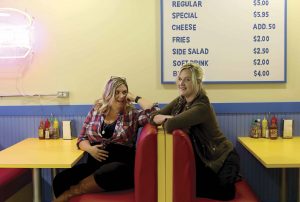
Wendy Molyneux (left) and her sister Lizzie Molyneux-Logelin chat in a working replica of the diner in Bob’s Burgers.
Molyneux was born in New York and grew up in Indiana, the second child in a family of four girls and one boy. Asking if her family name is French elicits another laugh. “Our last name sounds a lot more sophisticated than we are,” she says. “We’re like 80 percent Irish, or more. We’re actually potato people.”
She attended Franklin Central High School on the outskirts of Indianapolis, an area that was, at the time, primarily white, staunchly conservative and stubbornly bent on maintaining its rural lifestyle. She calls it “very proto-Trump country.” Her parents, Richard and Susan Molyneaux, were “Democrats in a sea of Republicans.”
The kids, however, did not see the world in political reds and blues. For them, it was a fascinating playland of childhood adventures and sibling shenanigans. They were “free-range kids,” recalls Molyneux, out of the house in the morning, back at night. There were no fences, and no adult supervision.
It smacks of the idyllic suburban life nostalgically portrayed in Steven Spielberg movies. “We literally had a cornfield at the end of our street,” recalls Molyneux. There was also a creek running through their backyard, and endless open space where they could run wild, along with their imaginations.
That carefree lifestyle is still a source of inspiration for story lines on Bob’s Burgers, focused on the off-kilter but loveable Belcher family: owner Bob, his wife Linda, and their three rascals, Tina, Gene and little Louise with her perennial pink rabbit ears. Molyneux does not rely on her children for ideas; she draws on her own childhood experience to animate the episodes she co-writes with her sister and longtime collaborator, Lizzie Molyneux-Logelin. To them, the cartoon Belchers share much in common with the real-life Molyneux family of a bygone era.
That era came to an end when Wendy was 15. Her father, an engineer, got a new job with Mattel, the corporate toymaker based in El Segundo, and the family moved nearby to the tony suburb of Manhattan Beach. Wendy enrolled at Mira Costa High School, among the best in the country. Lizzie, who is eight and a half years younger, was barely starting grade school.
California real estate prices gave her parents sticker shock. But the political climate on the left coast gave them a new sense of belonging. “It was a revelation,” Molyneux recalls, “like, ‘Oh my God, not everyone is conservative!’”
Despite their age difference, Wendy and Lizzie were great friends. They went to the movies and joked around together. It would be another 15 years before they would start writing together too.
After graduating from Mira Costa in 1993, Molyneux started weighing her college options, though not too rigorously. All she needed to make her choice was a casual glance through a promotional booklet for Pomona College that belonged to her sister Jenny, older by a year and a half, who had preceded her at Pomona.
Wendy zeroed in on a small boxed feature in the booklet, and there it was—her mission in life. “I literally can remember where it was on the page: bottom right-hand corner, somewhere in the middle of the book. A little box says, ‘Pomona College has an improv comedy group called Without a Box,’ and I was like, ‘Well, I have to go here,’” Molyneux recalls. “Literally, I didn’t care about anything else. I didn’t understand that most colleges have improv groups. I thought this was incredibly special.”
At Pomona, Wendy and her older sister took different tracks. Jenny majored in economics and sang in the Glee Club. After graduating, she worked in Pomona’s admissions office.
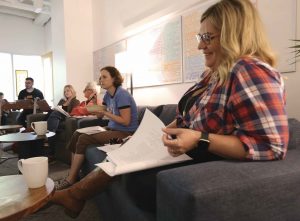
Wendy Molyneux works on a script with some of her colleagues at Bob’s Burgers.
Meanwhile, Molyneux was performing leading roles in classical theatre(Sophocles, Shakespeare, Molière) as well as contemporary theatre(Sam Shepard, María Irene Fornés). When not on stage, she was immersed in the study of English literature and poetry, informed at times by her passion for feminist issues. Mixing the two did not always please her professors.
In her junior year, Molyneux took a course on modernist poetry, a seminar led by then English Professor Cristanne Miller, a foremost authority on Emily Dickinson with a strong interest in women’s studies.
“Only seven students were in the class, and Wendy was among the strongest, although I recall that we had a few conversations about the need to moderate her tone in her papers,” recalls Miller, now a SUNY Distinguished Professor and Edward H. Butler Professor of English at the University at Buffalo. “A note in my grade book indicates that I handed Wendy’s first paper back ungraded, asking her to rewrite it, since it mostly raved about a single idea rather than developing an argument. The idea was in essence feminist and I was sympathetic to it, but expressing anger about T. S. Eliot’s portrayal of women is not sufficient for a literary critical paper—even a short one. Her second essay in the class was much better.”
Nowadays, Molyneux is not restrained by academic rigor in expressing her strong opinions on a host of topics, from feminism and gun control to motherhood, women’s rights and her none-too-subtle feelings about President Trump. Her Twitter feed (@WendyMolyneux) is peppered with F-bombs and other profane put-downs aimed at trolls, bots and other critics.
Some of her tweets are funny. Others are deadly serious.
“It’s going to be funny right until I get murdered,” she says, still laughing. “I did attract NRA trolls for a while. They send you pictures of guns and basically be like, ‘I hope you lock your doors at night.’ And then you report it to Twitter, and Twitter does absolutely nothing.”
Molyneux decided she would not be intimidated or back down. They want people to be afraid, she says, as a way to silence the opposition.
Recently, Molyneux spoke out against the diet industry as harmful to women’s self-image. She was particularly critical of a weight-loss app for kids called Kurbo from Weight Watchers. She tweeted a link and a deeply personal observation: “The first time I was told my body wasn’t okay, I was 4 or 5. Sad, right?!
Molyneux graduated from college with an English degree and a lack of direction. “I think a lot of people came out of Pomona being like, ‘I’m gonna be a doctor. I’m going to be on Wall Street.’ And I was like, ‘I’m going to move to San Francisco and work at a crepe restaurant. It was not a good plan. But now I work on a show about a restaurant, so I guess in a way, I was being incredibly smart.”
For a few years after college, Molyneux “floundered around” in search of a clear career path in comedy, but with no map.
“I had literally no idea how to make anything happen,” she says. “I didn’t have any family in the business, and I didn’t know how you were supposed to get started. It’s not like jobs are on LinkedIn. It’s more like a room that you want to be in, but nobody’s ever seen the door, and you don’t know where the door is. So you kind of, like, have to feel your way into it.”
Molyneux “flamed out” in San Francisco after a year. She moved back to L.A., waited tables, took temp jobs, worked for an answering service. Through trial and error, she eventually “stumbled sideways” into comedy as a life-sustaining endeavor.
She got a day job selling group tickets for the Hollywood Pantages Theatre, “a little troll that they kept in the basement … and no one checked on me all day.” In her downtime, she started writing short humor pieces for the website McSweeney’s Internet Tendency, “which is still a great place for young people to get their humor-writing published.” After hours, Molyneux pursued her passion at the legendary ImprovOlympic West in Hollywood (later the iO West), a training ground and cultural hub for comedians in L.A. until it closed last year.
But there’s one thing that Molyneux, a self-described introvert, would never, ever even try—stand-up comedy.
“I was too intimidated to do stand-up,” she says, recoiling at the thought. “Oh, no, no, no. I found it frightening to be on stage by myself.”
Improv, on the other hand, has been very, very good to Wendy Molyneux. It not only put her on a career path, but also on a path to starting her own family. She met her husband, fellow writer Jeff Drake, through the improv world, and their career paths merged along with their personal lives. At one point, Drake had a job writing promotional pitches for shows on NBC, and she joined him on the in-house staff when another job opened up.
They’ve worked closely together ever since.
In 2006, they were both hired as writers for a new NBC talk show featuring Megan Mullally, of Will and Grace fame. Though short-lived (less than five months), the show marked Molyneux’s first break into the TV-writing business.
During that time, Molyneux also started working for the first time with her sister Lizzie, who was still in college and doing a summer internship in entertainment. When Lizzie pitched a script idea to a producer, he liked it. With no experience, she turned to her older sister for advice. They worked on the script together, and though it didn’t go anywhere, a successful sibling writing team was born.
Theirs was no overnight success. They continued to work on pilots that didn’t get picked up and specs (or sample scripts) in hopes someone would like their ideas. They’re not sure how, but one of those specs made it to the desk of Bob’s Burgers creator Loren Bouchard. Suddenly—miraculously, they still think—they were hired for the show’s very first season in 2009.
“That’s the thing with entertainment,” Molyneux said on the podcast. “You have to keep throwing stuff at the wall until something sticks.”
The Burbank offices of Bento Box, the animation studio behind Bob’s Burgers, has been home to Wendy and Lizzie Molyneux for the past 10 years. Wendy’s husband Jeff (@hatethedrake, for all you Seinfeld fans) works on a different show in the same building, with offices just upstairs. Molyneux also thinks of her colleagues as family, all pitching in ideas, punching up jokes, putting final touches on scripts.
Fans are part of the family, too. They not only contribute artwork, but also fanatically keep track of episodes, minor characters, and running gags. One website ranked the show’s 149 special burgers by pun (no. 5: the Poblano Picasso Burger). Other fans intently try to catch all the punny names on neighboring storefronts (a pottery shop called “Welcome Back Potter,” or one of Wendy’s favorites, “Maxi Pads: Large Apartment Rentals.”)
The Molyneux sisters have become their own brand in the business, racking up writing awards together and getting hired as a team for new projects. Last month, they began work as showrunners and executive producers on a show they created themselves, along with Regular Show alumna Minty Lewis, called The Great North, about a single father in Alaska and his weird bunch of kids.
Molyneux is at the top of her game. But like many adults, she’s astounded how fast time passes. At heart, she admits, she’s “super sentimental and nostalgic,” especially when thinking back on those seemingly endless days of her childhood.
“I think that’s one of the reasons it’s good to work on an animated show,” she said on the podcast. “You get to stop time with these characters sort of permanently, which is maybe what all of us want to do at certain points in our lives. Like, ‘Oh, this is good right here. Let’s stop! Like everything’s fine right now. Let’s just stay here, getting to live in the eternal present.”
Photos by Iris Schneider





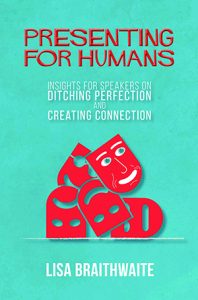 Presenting for Humans
Presenting for Humans Fascinating New Yorkers
Fascinating New Yorkers Aldo
Aldo Everyday Creatures
Everyday Creatures Come West and See
Come West and See Win
Win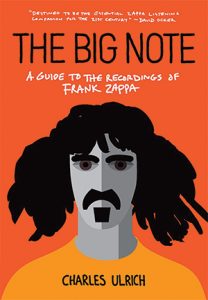 The Big Note
The Big Note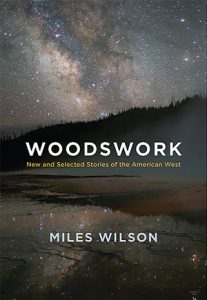 Woodswork
Woodswork Latin America in the Era of the Cuban Revolution
Latin America in the Era of the Cuban Revolution Understanding Nanomaterials
Understanding Nanomaterials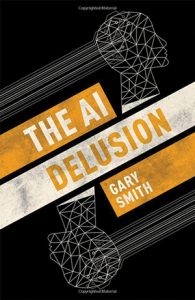 The AI Delusion
The AI Delusion At Goldman Sachs in San Francisco, the ambience was formal and there were plenty of suits. At the consulting firm Accenture, one of the leaders wore jeans and sneakers but kept a blazer handy. At another company across the bay, the highest-paid employees wore shorts. (That would be the Golden State Warriors.)
At Goldman Sachs in San Francisco, the ambience was formal and there were plenty of suits. At the consulting firm Accenture, one of the leaders wore jeans and sneakers but kept a blazer handy. At another company across the bay, the highest-paid employees wore shorts. (That would be the Golden State Warriors.) Rosalind Faulkner ‘19 is podcasting superlatives.
Rosalind Faulkner ‘19 is podcasting superlatives.
 Just before her own senior year arrived, Abby Lewis ’19 was working to send off Pomona’s 2018 graduates in the most environmentally-responsible way possible—with a zero-waste commencement.
Just before her own senior year arrived, Abby Lewis ’19 was working to send off Pomona’s 2018 graduates in the most environmentally-responsible way possible—with a zero-waste commencement. Twelve Pomona College recipients of the prestigious Fulbright fellowships are criss-crossing the globe this fall, doing research on independent projects or teaching English. Here’s a brief description of their plans:
Twelve Pomona College recipients of the prestigious Fulbright fellowships are criss-crossing the globe this fall, doing research on independent projects or teaching English. Here’s a brief description of their plans:
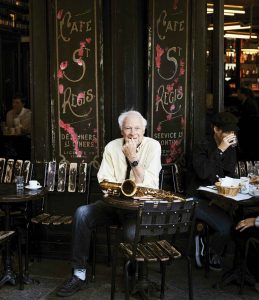 Photos By Antoine Doyen
Photos By Antoine Doyen In his first blog post 11 summers ago, he celebrated the city’s parks and alleys and gardens. He responded emotionally to the sound of the great 19th-century organs in the churches of Saint-Sulpice and La Madeleine (“Tears of joy well in my eyes, taking me by surprise. My heart swells in my throat and explodes with the passion of the moment”). He reported briefly on visits to two jazz clubs. In one, a tiny bar (“about 4m by 8m, good beer, not so good sandwiches”), the audience barely outnumbered the performers: There were, in total, three listeners, including Crummer; the band was a tenor sax player and a pianist (“I listen to the sound of six hands clapping as they finish each tune”).
In his first blog post 11 summers ago, he celebrated the city’s parks and alleys and gardens. He responded emotionally to the sound of the great 19th-century organs in the churches of Saint-Sulpice and La Madeleine (“Tears of joy well in my eyes, taking me by surprise. My heart swells in my throat and explodes with the passion of the moment”). He reported briefly on visits to two jazz clubs. In one, a tiny bar (“about 4m by 8m, good beer, not so good sandwiches”), the audience barely outnumbered the performers: There were, in total, three listeners, including Crummer; the band was a tenor sax player and a pianist (“I listen to the sound of six hands clapping as they finish each tune”). During his first month in the city, at the coffee hour after a regular service at the interdenominational American Church in Paris, he noticed a woman across the room. “She looked like a damsel in distress,” he recalls. “I thought ‘Uh-oh, that’s trouble’ but I went over and introduced myself. This is a church for Americans mostly, but she was French. She had an apartment to rent on the Île Saint-Louis, and she was there to post a notice on the church bulletin board.”
During his first month in the city, at the coffee hour after a regular service at the interdenominational American Church in Paris, he noticed a woman across the room. “She looked like a damsel in distress,” he recalls. “I thought ‘Uh-oh, that’s trouble’ but I went over and introduced myself. This is a church for Americans mostly, but she was French. She had an apartment to rent on the Île Saint-Louis, and she was there to post a notice on the church bulletin board.”